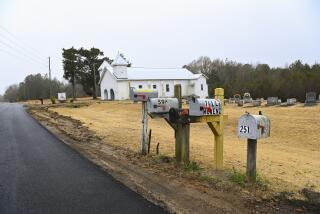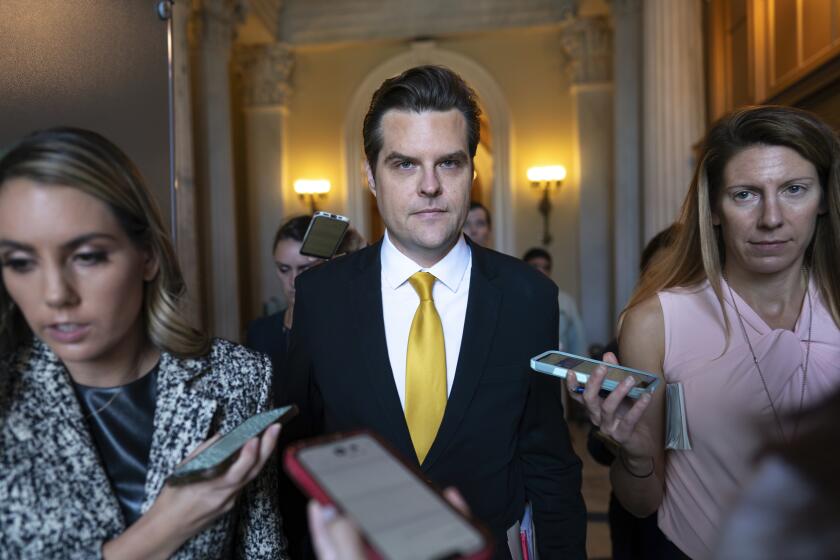Free markets vs. family values
We hear a great deal these days about the twin virtues of a free market and family values, as if the two went hand in hand. Reasoning about the connection seems to go like this: The freer the market, the more jobs. The more jobs, the more money. The more money, the stronger the family. And to free the market, the U.S. needs to cut taxes; privatize such things as public parks, libraries and schools; deregulate business; and cut public services such as Pell grants to help fund college, Medicaid and food stamps.
Cutting taxes for the top and services for the bottom may widen the gap between classes for a time, advocates acknowledge, but in the end family values will be served. Some economists argue that these policies donât make more jobs and may actually reduce them. But, leaving that debate aside, do free-market policies make for strong families?
One way to answer this question is to compare kids in nations that have aggressively embraced free-market policies with kids in nations that have not. The 2007 UNICEF âReport Card 7â does just that.
To compare the health, education, emotional and material well-being of children in 21 economically advanced nations, an international team of researchers looked at such indicators as whether children ate dinner with the family, had someone to talk to, were susceptible to accidents.
They reported the highest ratings of well-being among children living in the Netherlands, Sweden, Norway and Denmark â nations that, far more than we, tax the rich, regulate industry and provide such public services as paid parental leave, art subsidies and excellent public schools.
The lowest overall rank went to nations pursuing the strongest free-market agenda: the U.S. and Britain, both of which ranked in the bottom third for five of the six key dimensions of child well-being. The U.S. ranked dead last among these 21 affluent countries in child poverty and second to last in âfamily and peer relationshipsâ and âbehaviors and risks.â The likelihood of a child skipping breakfast, of becoming fat, of smoking pot, of a teenage girl getting pregnant â on all these measure, the U.S. and Britain ranked worse than nearly all the other nations.
Much of the difference, the researchers suggest, can be traced to the availability of public services. A 2010 follow-up study, UNICEF âReport Card 9,â reported the same bad news: The U.S. ranked 23rd out of 24 nations in the proportion of its children in poverty, beating out Slovakia, which came in last. We ranked 19th out of 24 in educational performance, and 22nd out of 24 in child health.
What about the effect of free-market policies on the well-being of adults? In their 2009 book, âThe Spirit Level: Why Greater Equality Makes Societies Stronger,â British epidemiologists Richard Wilkinson and Kate Pickett compared 23 of the richest countries in the world, drawing data from the United Nations, the World Bank and the World Health Organization and from many other studies.
They examined 29 different measures of the well-being of adults, including rates of violence, drug abuse, mental illness, levels of social trust, social mobility and overall health and life expectancy. They compared nations that had the widest financial gap between the richest and poorest 20% of the population with nations that had the narrowest gap between the two.
On almost all of these indicators, the highest-gap nations â the U.S., Britain and Portugal â reported the most distress. The per capita homicide rate in high-gap countries was 10 times that of low-gap ones, and high-gap nations had three times the rate of mental illness. Even middle-class people in high-gap societies felt less safe in their communities than did their counterparts in low-gap societies. They also suffered poorer physical and mental health and more obesity, and they died earlier from all causes.
The United States is relatively new to being a high-gap nation. In 1960, as Charles Murray observes in his 2012 book, âComing Apart: The State of White America, 1960-2010,â there was far less distance between Americans at the top of the socioeconomic ladder and those at the bottom. By 2010, the gap had grown dramatically, and Murray found that as the American class system âcame apart,â so too did the families he studied. Poor people in 2010 felt less trustful of others, less supported by others and less happy than poor people in 1960 â and so did rich people.
One reason for the widening gap is cuts to public services. Medicaid, food stamps, subsidized housing for the homeless and disabled, Head Start â these are programs that keep poor people from losing ground. Public service cuts affect middle-class people too, of course; in fact, they are the main users of national and state parks (one needs a car to get there) and public libraries. And with poorly funded public schools, middle-class parents will increasingly turn, as they are already doing, to private schools, which will mean Mom upping her hours at the office and Dad taking on overtime, leaving less time for the family.
We need a healthy market, of course. But we also have to understand that some of the policies said to free it can deeply hurt the very families free-marketeers claim to value. Why not aim a whole lot higher?
Arlie Russell Hochschild is the author, most recently, of âThe Outsourced Self: Intimate Life in Market Times.â
More to Read
A cure for the common opinion
Get thought-provoking perspectives with our weekly newsletter.
You may occasionally receive promotional content from the Los Angeles Times.










